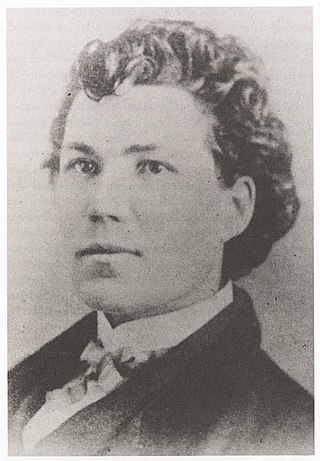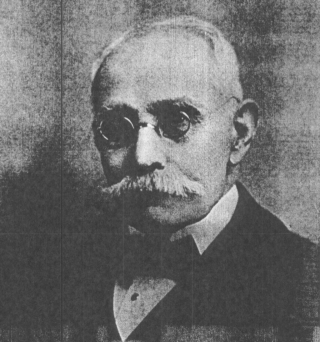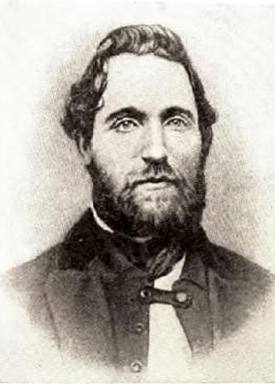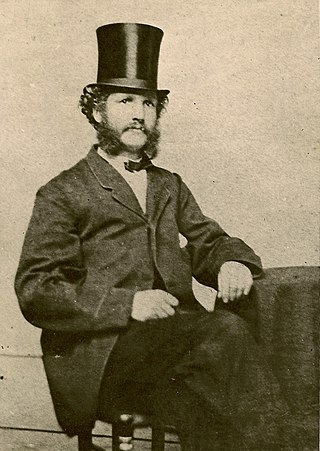
Allan Pinkerton was a Scottish-American cooper, abolitionist, detective, and spy, best known for creating the Pinkerton National Detective Agency in the United States and his claim to have foiled a plot in 1861 to assassinate president-elect Abraham Lincoln. During the Civil War, he provided the Union Army – specifically General George B. McClellan of the Army of the Potomac – with military intelligence, including extremely inaccurate enemy troop strength numbers. After the war, his agents played a significant role as strikebreakers – in particular during the Great Railroad Strike of 1877 – a role that Pinkerton men would continue to play after the death of their founder.

Pinkerton is a private security guard and detective agency established around 1850 in the United States by Scottish-born American cooper Allan Pinkerton and Chicago attorney Edward Rucker as the North-Western Police Agency, which later became Pinkerton & Co, and finally the Pinkerton National Detective Agency. It is currently a subsidiary of Swedish-based Securitas AB.

Rose O'Neal Greenhow was a famous Confederate spy during the American Civil War. A socialite in Washington, D.C., during the period before the war, she moved in important political circles and cultivated friendships with presidents, generals, senators, and high-ranking military officers including John C. Calhoun and James Buchanan. She used her connections to pass along key military information to the Confederacy at the start of the war. In early 1861, she was given control of a pro-Southern spy network in Washington, D.C., by her handler, Thomas Jordan, then a captain in the Confederate Army. She was credited by Jefferson Davis, the Confederate president, with ensuring the South's victory at the First Battle of Bull Run in late July 1861.
Tactical or battlefield intelligence became vital to both sides in the field during the American Civil War. Units of spies and scouts reported directly to the commanders of armies in the field, providing details on troop movements and strengths. The distinction between spies and scouts was one that had life or death consequences: if a suspect was seized while in disguise and not in his army's uniform, he was often sentenced to be hanged. A spy named Will Talbot, a member of the 35th Battalion, Virginia Cavalry, was left behind in Gettysburg after his battalion had passed through the borough on June 26–27, 1863. He was captured, taken to Emmitsburg, Maryland, and executed on orders of Brig. Gen. John Buford.

Maria Isabella Boyd, best known as Belle Boyd was a Confederate spy in the American Civil War. She operated from her father's hotel in Front Royal, Virginia, and provided valuable information to Confederate General Stonewall Jackson in 1862.

Elizabeth Van Lew was an American abolitionist and philanthropist who built and operated an extensive spy ring for the Union Army during the American Civil War. Many false claims continue to be made about her life. The single most reliable source is a 2002 biography by University of Virginia professor Elizabeth R. Varon.

Sarah Emma Edmonds was a British North America-born woman who claimed to have served as a man with the Union Army as a nurse and spy during the American Civil War. Although recognized for her service by the United States government, some historians dispute the validity of her claims as some of the details are demonstrably false, contradictory, or uncorroborated.
The Confederate Secret Service refers to any of a number of official and semi-official secret service organizations and operations conducted by the Confederate States of America during the American Civil War. Some of the organizations were under the direction of the Confederate government, others operated independently with government approval, while still others were either completely independent of the government or operated with only its tacit acknowledgment.
Black Dispatches was a common term used among Union military men in the American Civil War for intelligence on Confederate forces provided by African Americans, who often were slaves aiding the Union forces. They knew the terrain and could move within many areas without being noticed; their information represented a prolific and productive category of intelligence obtained and acted on by Union forces throughout the Civil War.
Hattie or Hatty is traditionally an English feminine nickname for the name Harriet, long used, however, independently.
Aaron Van Camp was an espionage agent for the Confederate States of America during the American Civil War. He and his son Eugene B. Van Camp were members of the Rose O'Neal Greenhow Confederate spy ring, which in 1861 was broken up by Allan Pinkerton, head of the newly formed Secret Service.
Labor spying in the United States had involved people recruited or employed for the purpose of gathering intelligence, committing sabotage, sowing dissent, or engaging in other similar activities, in the context of an employer/labor organization relationship. Spying by companies on union activities has been illegal in the United States since the National Labor Relations Act of 1935. However, non-union monitoring of employee activities while at work is perfectly legal and, according to the American Management Association, nearly 80% of major US companies actively monitor their employees.

Cypriano Ferrandini was a barber from Corsica who emigrated to the United States, and established himself as the long-time barber and hairdresser in the basement of Barnum's Hotel, in Baltimore, Maryland. There he practiced his trade from the mid-1850s to his retirement long after the close of the Civil War. He was accused, but never indicted for plotting to assassinate U.S. President-elect Abraham Lincoln on February 23, 1861, and while once caught in a secessionist dragnet in 1862, was never prosecuted for his pro-Southern convictions and membership in the Knights of the Golden Circle.
The Baltimore Plot were alleged conspiracies in February 1861 to assassinate President-elect Abraham Lincoln during a whistle-stop tour en route to his inauguration. Allan Pinkerton, founder of the Pinkerton National Detective Agency, played a key role by managing Lincoln's security throughout the journey. Though scholars debate whether or not the threat was real, Lincoln and his advisors clearly believed that there was a threat and took actions to ensure his safe passage through Baltimore, Maryland. He ultimately arrived secretly in Washington, D.C., on February 23, 1861.

Kate Warne was an American law enforcement officer best known as the first female detective in the United States, for the Pinkerton National Detective Agency. She also had a role in uncovering the 1861 Baltimore Plot against President-elect Abraham Lincoln, recruiting female agents for the Pinkerton Agency, and conducting intelligence work for the Union during the American Civil War.

Timothy Webster was a British-born American lawman and soldier. He served as a Pinkerton agent and Union spy, and was the first spy in the American Civil War to be executed.
George Curtis was a resident of New York at the beginning of the Civil War and joined a New York infantry regiment. He then became a Pinkerton agent, and a Union spy.
The Bureau of Military Information (BMI) was the first formal and organized American intelligence agency, active during the American Civil War.

Pryce Lewis was an operative of the Pinkerton Detective Agency and Union spy during the American Civil War. His activities in Charleston, Virginia and the surrounding area heavily assisted the Union Army during the early years of the war. Lewis was later captured and played a part in the trial and execution of fellow agent Timothy Webster.










